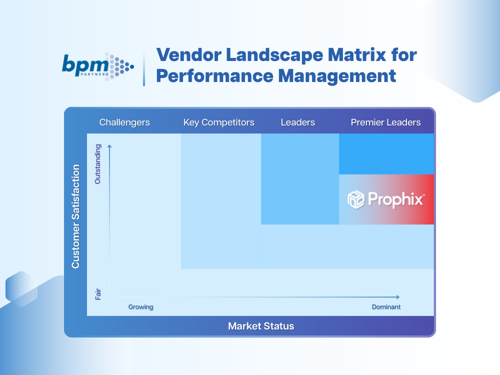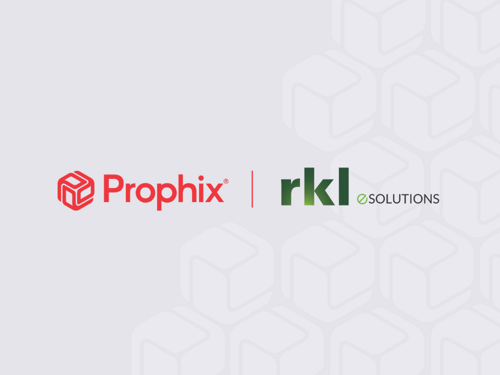Download Analyst Report
What's the difference? ERP vs Financial Performance Management
Do I need both ERP and FPM software? And how does an ERP work with FPM software?
October 12, 2023If you’ve spent time exploring the breadth of finance software options, you may be asking yourself: Do I need both ERP and FPM software? And how does an ERP work with FPM software?
Today, we’ll explore the key differences between Enterprise Resource Planning (ERP) and Financial Performance Management (FPM) software, how they work together, and how you can leverage the unique capabilities of each.
In this article, we’ll cover:
What’s the difference between ERP and FPM software?
The main difference between ERP and FPM software is that an ERP system records transactional and historical records, while FPM software uses your data to automate forward-looking processes like planning, reporting, and budgeting.
ERP software is a transactional system that captures individual transactions in an operational process.
- This allows you to accurately maintain records on financial accounting (e.g., general ledger, accounts receivable, accounts payable, etc.) and project management (e.g., job cost, work orders, change orders, etc.).
- An ERP can help your company scale the volume of transactions they process in different operations while increasing accuracy, auditability, and control.
In contrast, FPM software is designed to monitor business performance, plan initiatives, track progress, and analyze the results.
- FPM software can automate finance processes such as budgeting and planning, forecasting, scenario planning, and reporting and analysis.
- These finance processes are not transactional and often require input from multiple stakeholders, which means they are not compatible with ERP software.
FPM software is also sometimes referred to as CPM (Corporate Performance Management) software. Some users even simply call it FP&A software.
What is FPM software? And how does it support financial performance management?
Whether you call it FPM, CPM, or FP&A software, what we mean by FPM software is software that pulls together data from your systems into a single platform for financial performance management.
FPM software integrates with a variety of business systems, including:
- Enterprise Resource Planning (ERP)
- Project Management (PM)
- Customer Relationship Management (CRM)
- Human Resources Information (HRIS)
With FPM software, you can take the data from your ERP and apply it to different scenarios, plans, and budgets so you can understand how your business is performing and where to go next.
Gain fast insight into various scenarios.
It may be helpful to conceptualize the difference between ERP and FPM software this way: Your ERP is like a textbook, and your FPM software is like a worksheet. Your ERP has all the information you need to learn more about a topic - but it can be challenging to find the information you need in a such a large and cumbersome book. However, when you take the time to apply your knowledge to a worksheet, you can fully understand the topic and its applications.
How do ERP and FPM software work together?
FPM software works with your ERP to give you a holistic view of your business performance. This is achieved by integrating the transactional data from your ERP with your FPM software.
Integration is a technical term that refers to the back-end process that allows different software systems to exchange information. Integrating your ERP and FPM software is the foundation for data analysis, reporting, and forward-looking planning.
In short, your ERP software captures a record of your transactions and data so that you can use this information to budget, plan, and report using FPM software.
How does an ERP affect financial performance management?
An ERP can improve financial performance management by eliminating disconnected databases and unifying data from cross-functional teams, including finance, sales, marketing, customer success, and human resources.
With a robust ERP system, you are better equipped to use FPM software understand the full impact of your decisions, improve visibility into departmental performance, and boost collaboration amongst stakeholders.
What does ERP software integrate with?
ERP software integrates with a variety of business applications, including project management (PM), customer relationship management (CRM), human resources information (HRIS), and financial performance management (FPM) systems, as well as any other databases your business may have.
Much like FPM software, the outcome of integrating these business applications with your ERP is accurately capturing all your transactions and data, so you have a complete picture of your business performance.
How do you integrate ERP with FPM software?
It should be seamless and secure to integrate your ERP system with FPM software, and can be as simple as installing an ERP Connector or using the FPM software’s API to connect with almost any other business system. You can even setup new integrations without involving your IT department, which reduces costs and ensures you are working with the latest data.
For example, Prophix’s Financial Performance Platform integrates with almost any ERP, including Sage Intacct, Sage X3 Acumatica, SYSPRO, Microsoft Dynamics 365, Trimble Viewpoint Spectrum and Vista, Ellucian Colleague and Banner, Oracle, JD Edwards, and many more.
In fact, we have established strategic partnerships with several ERP vendors, including Acumatica, Sage, and SYSPRO, to ensure the integration between your ERP and FPM software is fully optimized.
Use ERP and FPM software together, to your advantage
In conclusion, understanding the differences between ERP and FPM software is crucial to optimizing your financial management processes.
While ERP software serves as a comprehensive database, capturing transactional data and records, FPM software acts as a business intelligence platform, allowing you to apply that data to analyze, plan, and report on your business performance.
By integrating your ERP with FPM software, you can gain a holistic view of your business, improve visibility and collaboration, and make informed decisions so you can drive your business forward.





